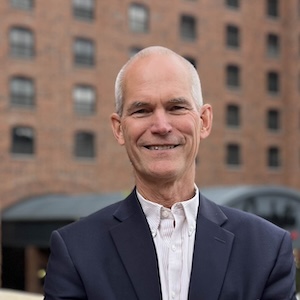What exactly does modern community leadership look like? And what specific tools do community leaders need to succeed?
Throughout history, very few human accomplishments of significant value have been achieved by a single individual working alone. When addressing important issues, who would be content to work alone? There is simply too much work to do!
Most noteworthy movements begin and end at the grassroots level. This is because few movements can flourish without the support and enthusiasm of community members. But without leaders to organize these individuals and provide them with a way to act, real change is highly unlikely to occur.
In terms of focus, today’s community leaders must expand their purview as wide as possible without losing sight of their fundamental mission. When it comes to skill development, tomorrow’s community leaders can begin by taking these 10 steps:
1. Understand Your Community
Community engagement is essential for anyone who wants to be a better leader. Additionally, anyone who wants to engage with a community must first and foremost understand that community.
Although we commonly think of community in terms of geographic proximity, people don’t need to live close to one another to come together as a cohesive group. Thanks to modern technology, communities can now form over tremendous physical distances. Through customs and backgrounds, interests and skills, countless commonalities can establish strong ties that bind people into close-knit communities.
Your job as a community leader is to know what values lie at the heart of the community you serve. To make informed decisions, you must also foster and maintain a clear understanding of the various environmental and sociopolitical forces at play, as well as all sides of the major issues affecting that community.
2. Foster Open Communication
You cannot gain a thorough understanding of community values and concerns without establishing and nurturing open channels of communication. After all, these are the key stakeholders you serve as a community leader, and you can only effectively address problems that you fully understand.
To promote community and civic engagement, begin by asking its members about their preferred methods and forms of communication. This way you can build your communication strategy on common ground and meet people where they are at in their preferred communication style—for example, don’t send emails to people who are most comfortable with face-to-face meetings.
After opening channels of communication, you must learn to use them successfully, both to inform community members on important matters and to seek input before making critical decisions. Generally speaking, effective communication leads to effective community outreach and interactions.
3. Practice Integrity and Accountability
Although integrity and accountability are key for leaders of all types, these values are particularly essential in the world of community leadership. This is, in part, because community leaders should place a pronounced focus on servant leadership. The Indeed Career Guide summarizes the heart of servant leadership succinctly with this golden rule: “Aim to serve your team rather than expecting the team to serve you.”
Quality servant leadership is virtually impossible without integrity and accountability. Your capabilities as a community leader are only as powerful as your reputation. Thus, you must do all you can to foster and enhance trust among stakeholders and community members. Lead with an emphasis on personal credibility by remaining transparent in all your actions and taking responsibility for your mistakes.
4. Lead With Empathy
As you interact with community members, your relationships with them will inevitably grow deeper and richer. Beyond its other benefits, this process will place you in a unique position to lead with empathy.
Empathy, or seeing matters from the point of view of another, is exceptionally valuable in community leadership. Along with instilling compassion for community members, an empathetic leadership approach allows the community to see themselves in their leaders. Therefore, empathy can help you lead by example, projecting a positive attitude that is infectious to others.
5. Encourage Participation and Involvement
Connecting empathetically with a community can be challenging due to the wide spectrum of individuals that most modern communities comprise. “Communities are diverse, ranging from neighborhoods, to schools, to organizations, to ethnicities, and so much more,” writes Nicky Dare. “It is important to realize the role leadership plays in maintaining order and giving direction in each community.”
Diversity demands inclusivity. This means encouraging participation and involvement with all members of the community and ensuring all key stakeholders are at the table, including underrepresented community members. If you can’t foster inclusion and consensus, you are unlikely to go far as a community leader.
A great way to accomplish this is to embrace hands-on leadership: try to guide groups rather than push them. “Aim to work side by side with them,” recommends the Indeed Career Guide. “If this means long hours or learning new skills, as the leader, you can set the example by doing these things alongside your team.”
6. Stay Educated and Informed
Seeking relevant leadership training, such as the training provided in the Master of Professional Studies in Civic Engagement at the University of Minnesota, is critical to effective community leadership. After establishing a foundation of education through this or another specialized academic program, you can continue seeking new information and staying current with the latest developments in the leadership field, paying close attention to techniques that relate directly to your community and its concerns. Of course, you must also learn as much as you can about the specific issues that resonate within your community.
7. Be Adaptable and Open-Minded
A one-size-fits-all approach to leading and interacting with a diverse array of community members and stakeholders simply won’t work. It is vital for you to remain open-minded and adaptable in your project management and decision-making, to better meet community needs and evolve with the times. Of course, effective communication and collaboration with community members and other stakeholders are crucial to this endeavor.
To act in the best interests of the people you serve, strive to embrace change, value innovation, and think “outside the box.” The best leaders are one-of-a-kind individuals who remain relevant with large groups of people.
8. Delegate and Empower Others
“Alone, we can do so little; together, we can do so much.” The words of Helen Keller resonate quite strongly within the realms of task delegation and community empowerment. The Indeed Career Guide puts it another way, defining leadership as the achievement of goals through the efforts of others. “To be successful,” insists Indeed, “you must be able to motivate people to pursue the vision you have set forth.”
Many people want to make a positive difference in their community—but to transform their wishes into action, most require some sort of organizational framework that is headed by a dedicated leader. In other words, they are eager for task delegation.
Rather than viewing delegation as “telling someone what to do” or “ordering someone around,” community leaders should understand that their team members generally want to take action to further a common cause.
9. Stay Resilient and Persistent
Change rarely comes easily, and the limited resources of most community leaders tend to make their jobs quite difficult. This means you should possess and exhibit tremendous persistence and resilience.
Persistence begins with a clear set of objectives. You don't want to commit to a challenging journey without a firm destination in mind. To produce desirable results, though, you must also practice resilience, which often requires flexibility and adaptability.
Furthermore, persistence and a resilient leadership approach will give rise to other positive attributes. For example, passionate dedication to community projects and outcomes will likely lead to increased confidence and self-assurance.
10. Engage in Self-Reflection
Another powerful driver of confidence and self-assurance is self-reflection. Without substantial self-reflection, you cannot gain a true understanding of yourself, your leadership characteristics, or your ability to affect others.
To put it a different way, you can’t influence others if you don’t understand them, and you cannot understand others if you don’t understand yourself. Leaders with greater levels of self-awareness tend to foster healthier work environments, work more efficiently with team members, and make better decisions.
From psychotherapy to spirituality, people take many different routes to self-reflection. However, a bit of self-care is a great place to start. In the words of community strategy expert Deb Schell, “I encourage you to start every day with yourself in mind first. Find a moment to meditate, pray, journal, or relax with a cup of tea or coffee.”
Learn More Today
If you want to make life better for people at the community level and beyond, you can start by building your leadership skills. At the University of Minnesota, our Master of Professional Studies in Civic Engagement program has roots in Thomas Ehrlich’s classic definition of civic engagement as “working to make a difference in the civic life of our communities and developing the combination of knowledge, skills, values, and motivation to make that difference."
To learn more about this master’s degree program and what it can do for aspiring community leaders, contact a U of M representative. We are happy to answer any questions you might have about this or any other U of M degree program.








